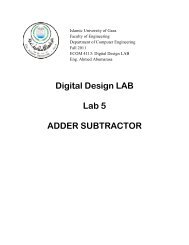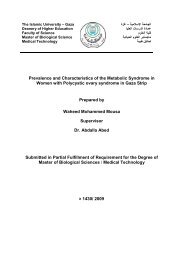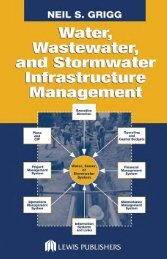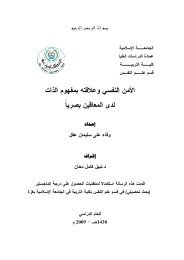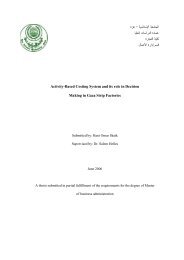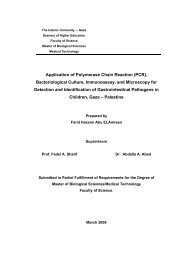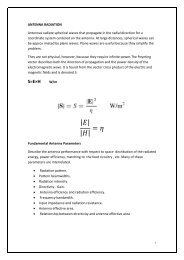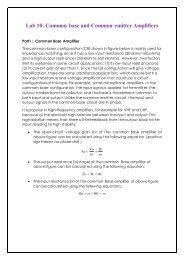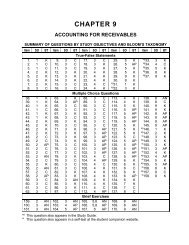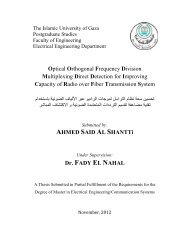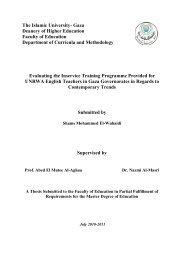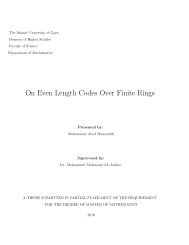A prActicAl guide Benchmarking in european Higher education
A prActicAl guide Benchmarking in european Higher education
A prActicAl guide Benchmarking in european Higher education
Create successful ePaper yourself
Turn your PDF publications into a flip-book with our unique Google optimized e-Paper software.
ISO 9000<br />
Perhaps most widely known of all quality models are the different parts of<br />
the ISO 9000 series, because its certificates are advertised widely <strong>in</strong> many<br />
branches of <strong>in</strong>dustry. The ISO is the International Standards Organisation,<br />
which issues norms for all k<strong>in</strong>ds of products and processes. The standards<br />
on quality used to be specified <strong>in</strong> ISO 9001 to ISO 9004, but with the 2004<br />
update (they are updated regularly) all were brought together <strong>in</strong> ISO 9000.<br />
The highlight of the ISO 9000 approach is <strong>in</strong> the detailed description of processes<br />
<strong>in</strong> organisations. Putt<strong>in</strong>g processes on paper <strong>in</strong>to handbooks whose<br />
application is checked by external auditors, which when successful leads to<br />
the ISO certification, is the core of the approach. 3 In the newer versions of the<br />
ISO 9000-series, the approach is said to be more sophisticated, but for the<br />
public certification rema<strong>in</strong>s the focus. The emphasis is therefore on standardis<strong>in</strong>g<br />
activities <strong>in</strong> organisations. The strength of formalis<strong>in</strong>g procedures<br />
is that all cases will be handled <strong>in</strong> a standardised manner; <strong>in</strong> this way, errors<br />
of neglect will be avoided. This strength is also its weakness: the ISO<br />
approach is less suited to work processes that show a large repertoire of<br />
options, whose choice depends on expert <strong>in</strong>sight, or on trial and error. And<br />
that is precisely what characterises the core of the work <strong>in</strong> higher <strong>education</strong><br />
<strong>in</strong>stitutions, such as <strong>in</strong>dividualisation of teach<strong>in</strong>g to students with different<br />
learn<strong>in</strong>g styles and background knowledge, or design<strong>in</strong>g and runn<strong>in</strong>g <strong>in</strong>novative<br />
empirical tests <strong>in</strong> laboratories or surveys. Of course, higher <strong>education</strong><br />
<strong>in</strong>stitutions use many processes that are fairly amenable to standardisation,<br />
e.g. student services, library and ICT services, or <strong>in</strong>formation and management<br />
processes. For these processes, usually processes support<strong>in</strong>g the<br />
core activities of <strong>education</strong> and research, an ISO approach is as applicable as<br />
it is <strong>in</strong> bus<strong>in</strong>ess organisations.<br />
3<br />
The presence of certificates may lead to a target-shift from assur<strong>in</strong>g quality to gett<strong>in</strong>g the certificate, with the<br />
same aberrations we see <strong>in</strong> higher <strong>education</strong>: just as there cont<strong>in</strong>ues to be a demand for degree mills, there is<br />
also demand for forged ISO certificates.<br />
A Practical Guide - <strong>Benchmark<strong>in</strong>g</strong> <strong>in</strong> European <strong>Higher</strong> Education<br />
25



